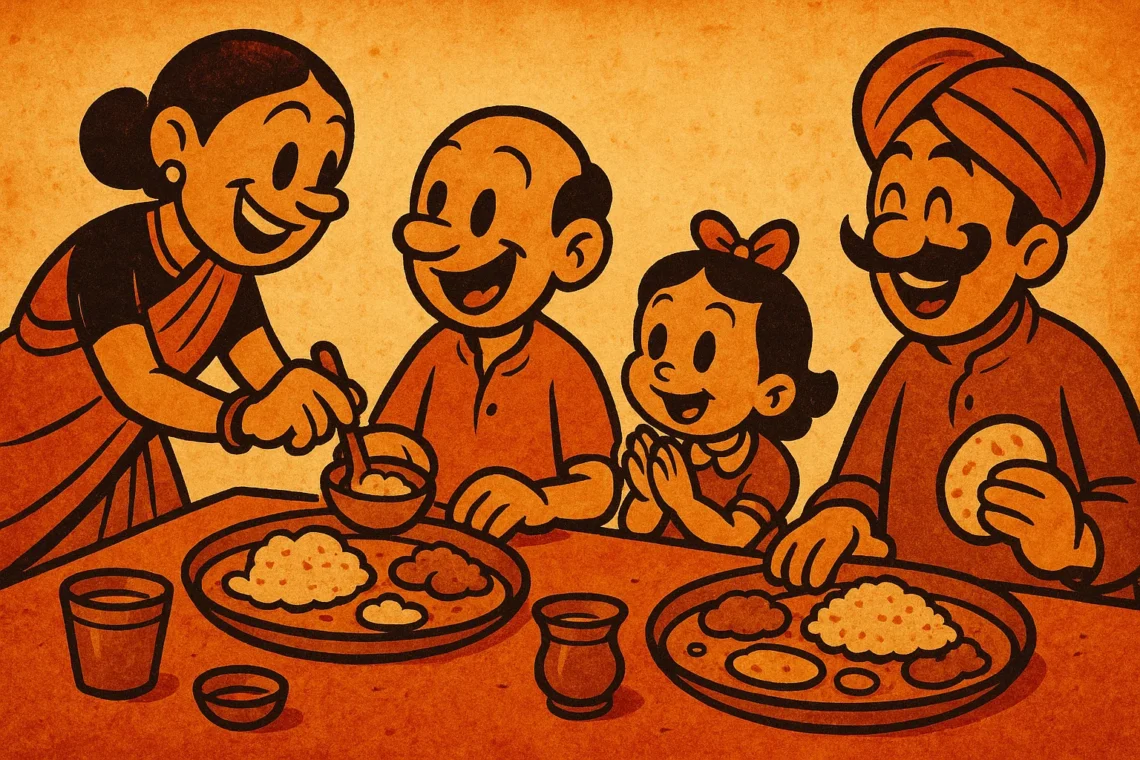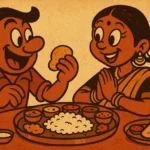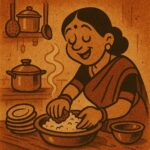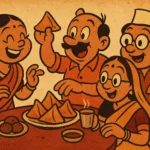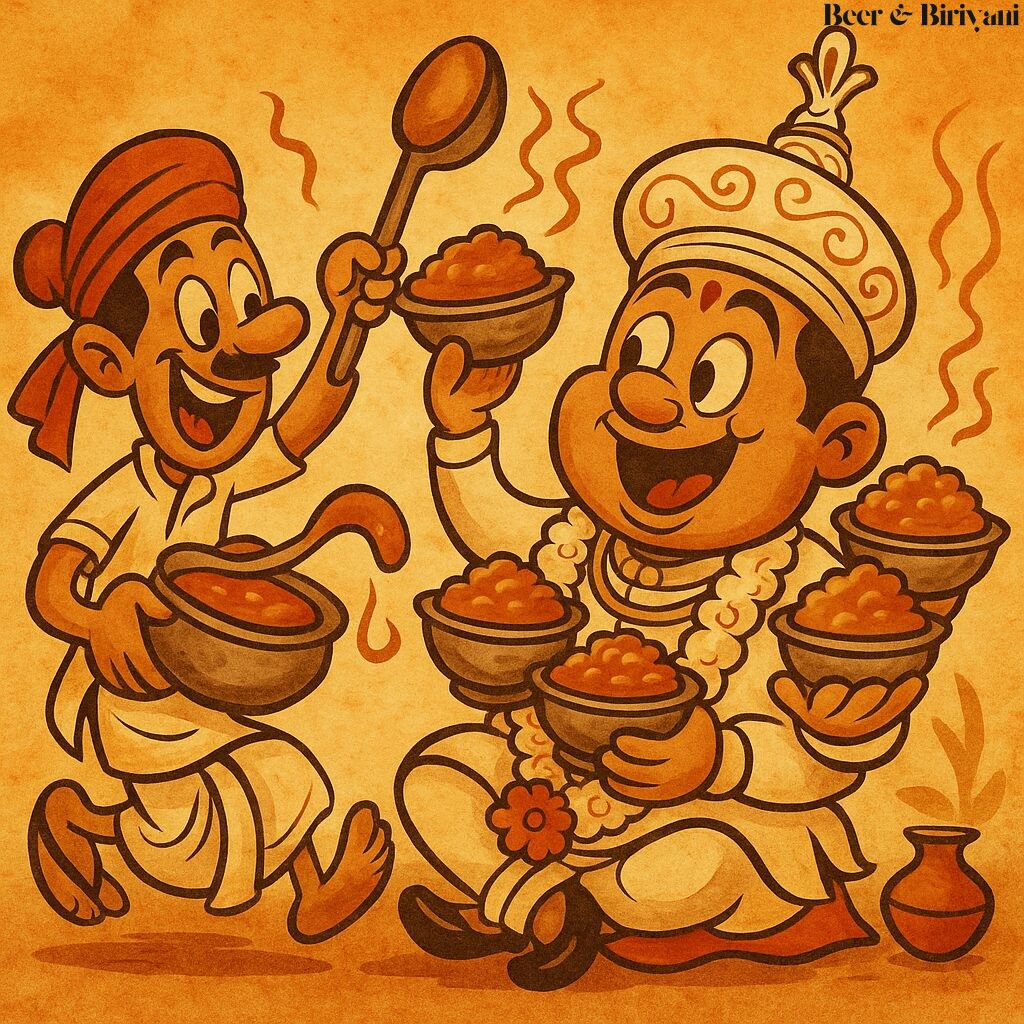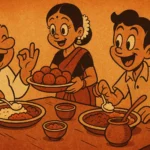In the home I grew up in, Sunday lunches weren’t just meals—they were elaborate productions. Somewhere between a family gathering and a performance review, everyone had a part to play, and every utensil had a role. But the real indicator of where you stood in the family pecking order wasn’t the number of puris you got or whether you were served first. It was the plate. Specifically, the kind of *steel* plate you were given.
In our house, not all steel was created equal. There were lightweight, slightly dented thalis for the younger kids, smaller quarter plates for the occasional guest’s child, and then—the prized possessions—the heavy-duty, mirror-finish, prestige-laden steel plates that only came out for elders, visiting VIP uncles, or people who had recently achieved something impressive, like buying a Maruti 800 or returning from Dubai with Toblerone.
The hierarchy of the kitchenware cabinet was subtle but powerful. And it wasn’t just plates. Glasses, spoons, even katoris had unwritten designations. You got to use the etched floral design glass if you’d just passed your board exams. Otherwise, it was the humble, scratched-up tumbler with a mysterious ding that whistled slightly when filled with cold water. Everyone knew their place at the table. And the table knew you too.
The Kitchen Politics of Prestige
My grandmother was the grandmaster of this culinary caste system. She wielded her ladle like a sceptre. She never explicitly said anything, of course. But you knew you were finally taken seriously the day you got served in the weighty thali—the one that made a gentle thud when you placed it down. That plate came with sides. Not side dishes—side glances from cousins and sometimes a conspiratorial nod from an aunt who had been waiting for you to “level up.”
It was a rite of passage. You didn’t ask for the better plate. You just… evolved into it. Much like moving from the backseat of the Maruti to the front. One day you’re a kid stealing fried papad off other people’s plates. The next, you’re handed the good steel, with the proper sambhar-to-rice ratio, and you realize—this is what adulthood in our house looks like.
Guests and the Great Plate Switch
Guests changed everything. The moment someone said, “Ramesh kaka is coming for lunch,” a hush would fall over the kitchen. This meant the good plates would be pulled out. Not just wiped down—no, they were massaged with a paste of tamarind and salt, rinsed thrice, and dried with a cloth that had only one job in its career: polishing steel.
We kids knew we’d be downgraded that day. Paper plates, if it was a big gathering. Melamine, if it was semi-formal. But we didn’t mind. Because watching your aunt serve pickles from the steel container set that came out once a year, hearing your uncle casually comment on the weight of the glass in his hand—it was like watching a play unfold. A drama of tradition, respect, and stainless-steel diplomacy.
When I Got My Own Set
When I moved to the U.S., one of the first packages my mother sent me (alongside homemade besan ladoos and a deeply unnecessary winter muffler) was a set of steel plates. “You’ll need them,” she said, with that inscrutable tone that meant more than it said. And she was right.
I didn’t realize how much comfort could be held in cold metal. In the clink of a spoon against a thali, in the way curry puddles at the center just the right way, in the joy of eating rice with your hands and not worrying about damaging ceramic. Those plates weren’t just utensils. They were home, packed flat and wrapped in newspaper.
Now Serving Nostalgia
Today, I own fancier dishes. I’ve picked up quirky ceramics from farmer’s markets, minimalist Japanese bowls from discount sales, and a slightly-too-expensive pepper grinder I don’t really know how to use. But when it’s daal-chawal night, or when I just need the emotional reassurance that only home food can offer, I go back to the steel.
I take out the heavy one. The one with the faint scratches that look like the fingerprints of every meal I’ve ever loved. And I eat slowly, carefully. Like I’m trying to earn it all over again.
Because in our house, steel plates weren’t just about what you were eating. They were about who you were becoming.
Born in Mumbai, now stir-frying feelings in Texas. Writes about food, memory, and the messy magic in between — mostly to stay hungry, sometimes just to stay sane.

